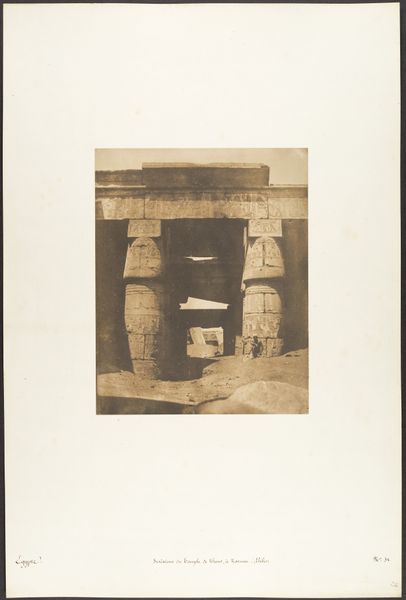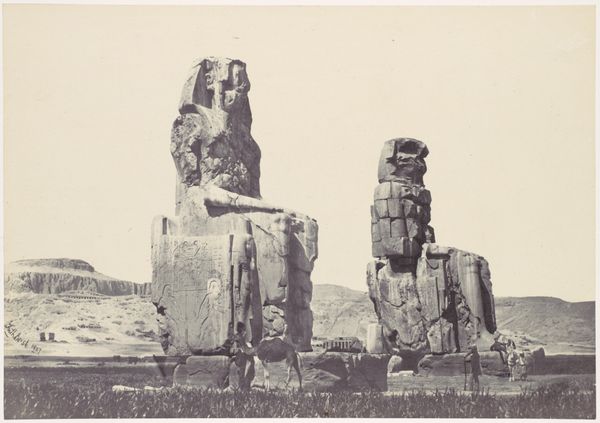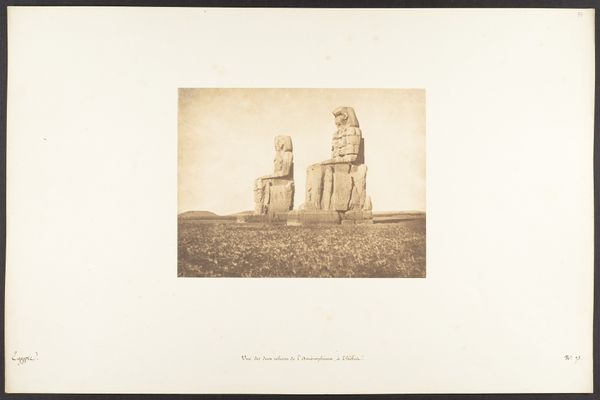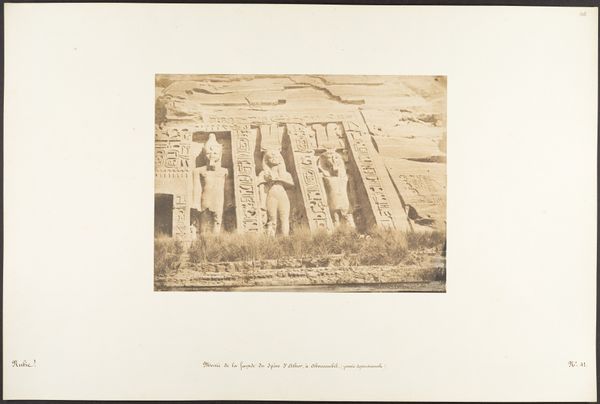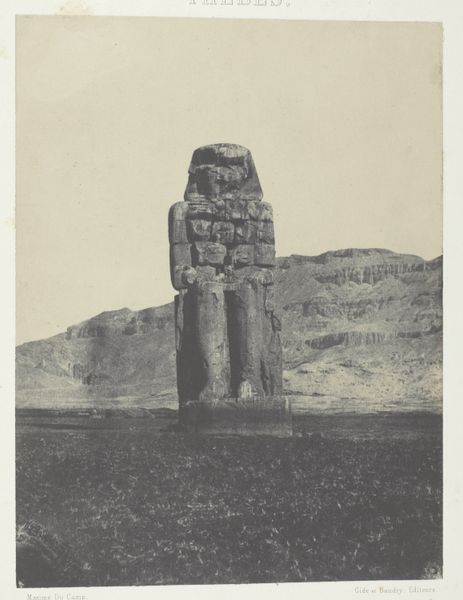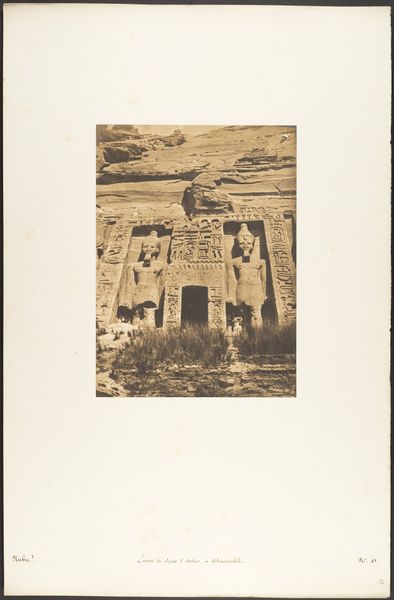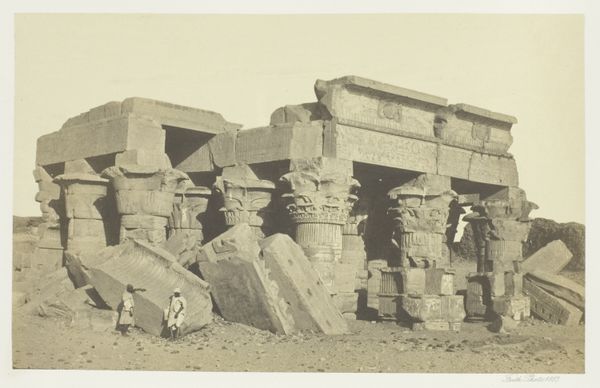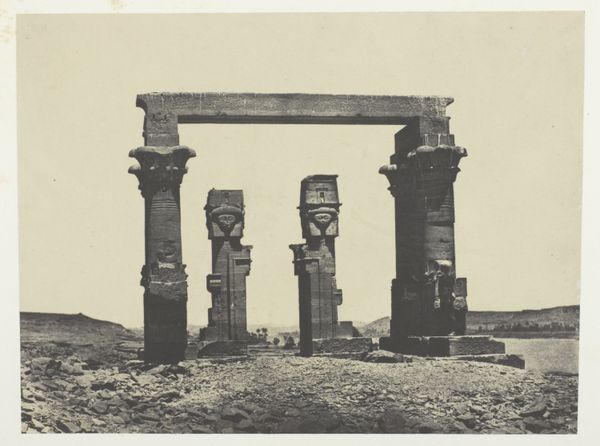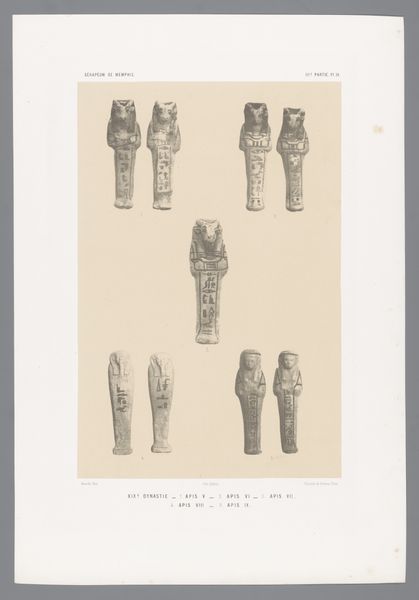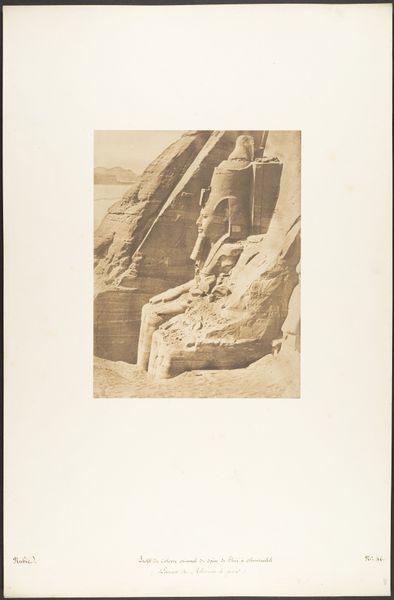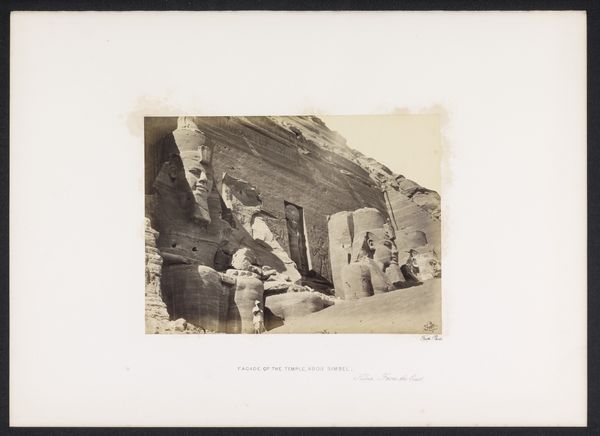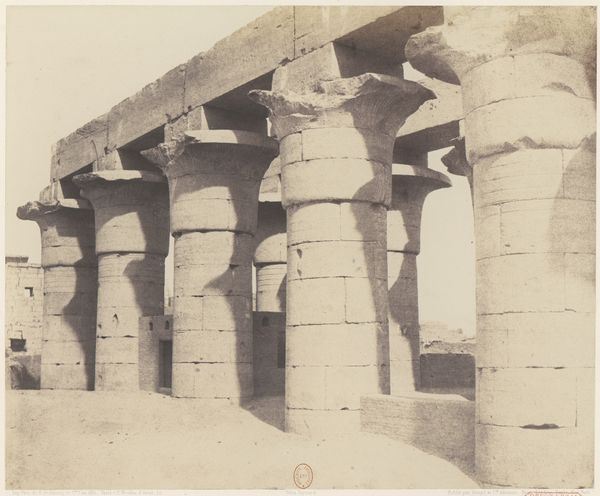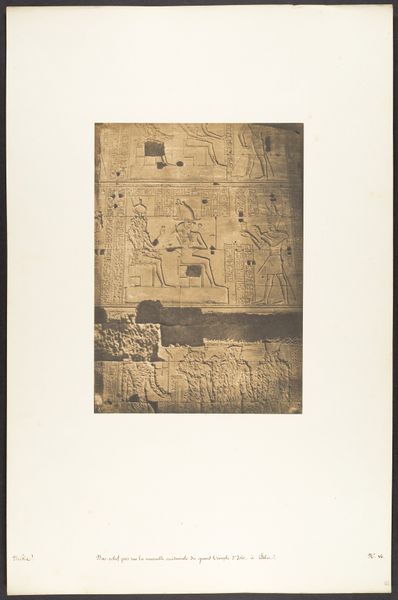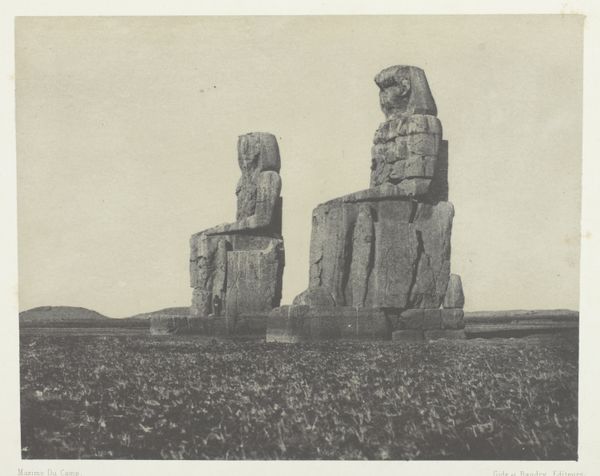
Groupe de colonnes du Palais de Louxor, Thèbes 1849 - 1850
0:00
0:00
photography, architecture
#
landscape
#
ancient-egyptian-art
#
photography
#
column
#
arch
#
architecture
Dimensions: Image: 8 7/16 × 6 9/16 in. (21.4 × 16.6 cm) Mount: 12 5/16 × 18 11/16 in. (31.2 × 47.5 cm)
Copyright: Public Domain
Curator: Looking at this sepia-toned print, what do you feel? Maxime Du Camp captured this around 1850 in Thebes, calling it "Groupe de colonnes du Palais de Louxor". Editor: The immediate impression is monumentality, isn’t it? But there’s also something so fragile about its rendering—it feels less like eternal stone and more like a dream of it. A dusty, whispered echo. Curator: I find it dreamlike as well! Consider Du Camp's journey, lugging photographic equipment to Egypt. He wasn't just taking pictures; he was preserving—almost breathing life back into—ancient majesty. Editor: And it’s important to consider what it *means* to ‘breathe life back’ through this mechanical medium. Think of the chemistry, the labor of developing these images. How does that affect our experience of such grandeur? Was it his lens or his labor, and what does the introduction of that process do? Curator: Perhaps it highlights the passage of time. There's something haunting in its stillness; the scale of those columns—you can just make out the figure of a person at their base, totally dwarfed. They've withstood millennia, yet this fleeting photographic moment seeks to capture their essence. I wonder if he sensed his images might one day outlive even the stones themselves in the collective memory. Editor: Or at least change their purpose. Before, the palace existed materially as something to behold, as testament to wealth and power and the work to manifest it; now, photographed, it can be replicated, consumed, discussed at a remove from that labor. I’m less sure about the preservation argument. The camera never lies… but what does it actually tell us? Curator: It does bring up complex questions, I think. Looking closer at Du Camp's composition here, it feels almost deliberately detached. Is he inviting us to analyze the relationship between those great feats of construction and a single human's effort and what it could potentially create? Editor: I’d say so. His work speaks to more than aesthetics alone. Ultimately, seeing the ways historical artworks like this are transformed in time challenges our romantic ideas and also gives weight to the present material moment that allows us to have it accessible now. Curator: Absolutely. The more we examine it, the more layers of history it unveils—the ancient builders, Du Camp, the photograph, and our modern gaze reflecting upon it. It's quite beautiful.
Comments
No comments
Be the first to comment and join the conversation on the ultimate creative platform.
